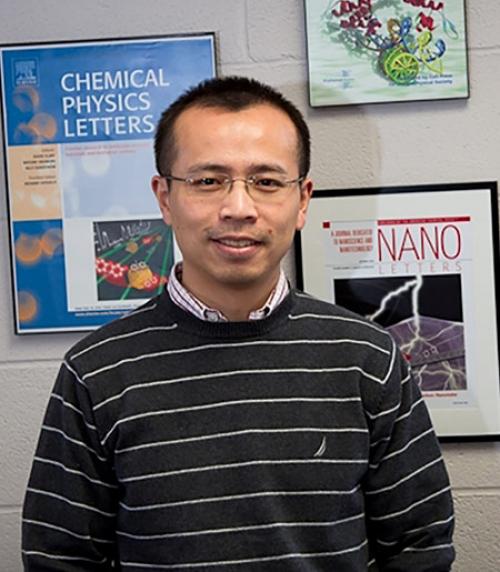With a growing global population will come increased energy consumption, and sustainable forms of energy sources such as solar fuels and solar electricity will be in even greater demand. And as these forms of power proliferate, the focus will shift to improved efficiency.
Photoelectrodes and photovoltaics such as solar panels often feature thin films of silicon or other nanostructured semiconductor material, and these structures include nanoparticles through which the current generated by sunlight must pass. While the nanoparticle composition offers many benefits, including large surface-to-volume ratios, it has one significant drawback.
Electrical current passing from one particle to another experiences a power loss; if the current passes through enough of these particle-particle interfaces, the total loss could render the device useless. But no one has been able to determine just how much power is lost as the current goes from one nanoparticle to another – until now.
A group led by Peng Chen, the Peter J.W. Debye Professor in the Department of Chemistry & Chemical Biology, has determined that photocurrent loses approximately 20 percent of its power as it passes through the interface. Thus, the group stated, current that passes through 11 such interfaces would be reduced to just 10 percent of its original power.
“We believe this will provide a benchmark for people using nanomaterials to design these types of devices,” said Chen, senior author of “Quantifying Photocurrent Loss of a Single Particle–Particle Interface in Nanostructured Photoelectrodes.”
The report was published Jan. 7 in Nano Letters, a publication of the American Chemical Society. Other authors included former postdoctoral associates Mahdi Hesari and Justin Sambur, current postdoc Xianwen Mao and Won Jung, Ph.D. ’18, all from the Chen Group.
To perform this experimental calculation, Peng and his group used a microfluidic cell, with three electrodes in an aqueous electrolyte solution. One of the electrodes was made of strips of indium tin oxide (ITO); on or near it were placed nanorods of titanium oxide, whose photoelectrochemical properties the group had already examined.
The group experimented with several different particle configurations, and focused a laser beam on a spot either just after (Type-A spots) or just before (Type-B spots) the interface where two nanorods touched each other. The laser hitting the Type-B spots sent the photoelectric charge through the particle-particle interface.
Taking dozens of measurements of both types of photoelectrochemical behaviors, the group observed power losses averaging around 20 percent.
Although Chen and his group have now come up with a solid figure for calculating power loss in nanomaterials, they still don’t have a handle on why this happens. They’ve ruled out factors that rely on the strength of the current.
“We still don’t understand the underlying molecular mechanism that leads to this 20 percent loss,” he said. “This is something we plan to pursue in the future, and it will require us to essentially actively manipulate the interface, manipulate the chemical nature of the interface, and reperform our measurements.”
This work was supported by grants from the U.S. Department of Energy’s Office of Science-Basic Energy Sciences and the U.S. Army Research Office. The research made use of the Cornell Center for Materials Research, which is supported by the National Science Foundation.
This story also appeared in the Cornell Chronicle.





